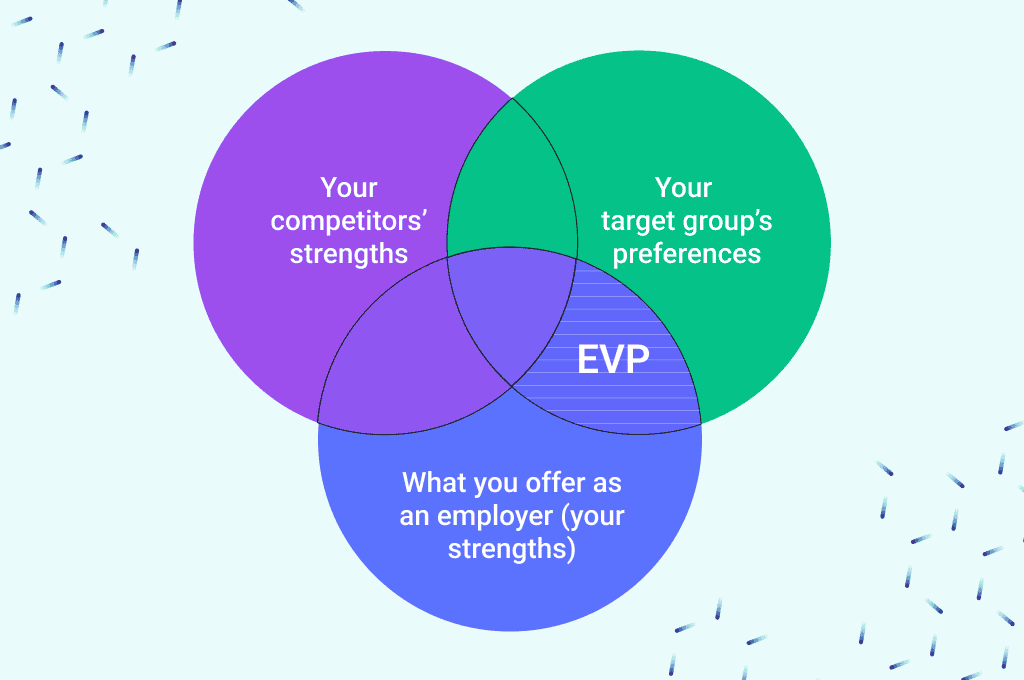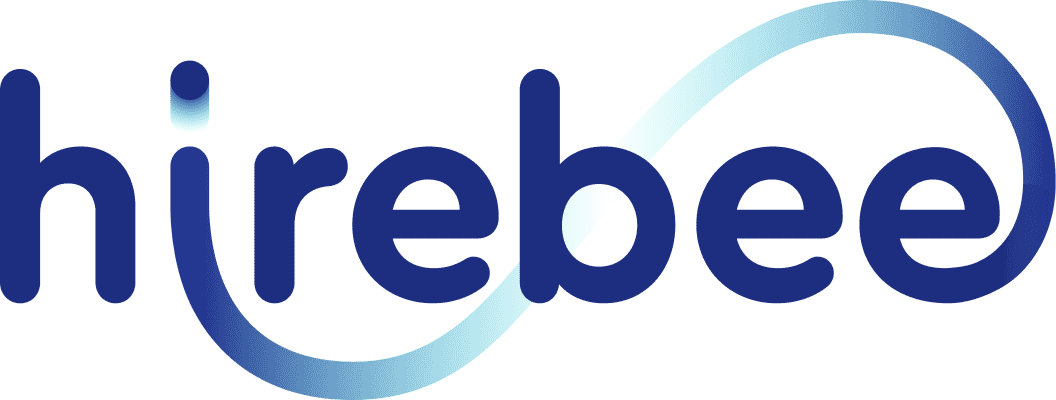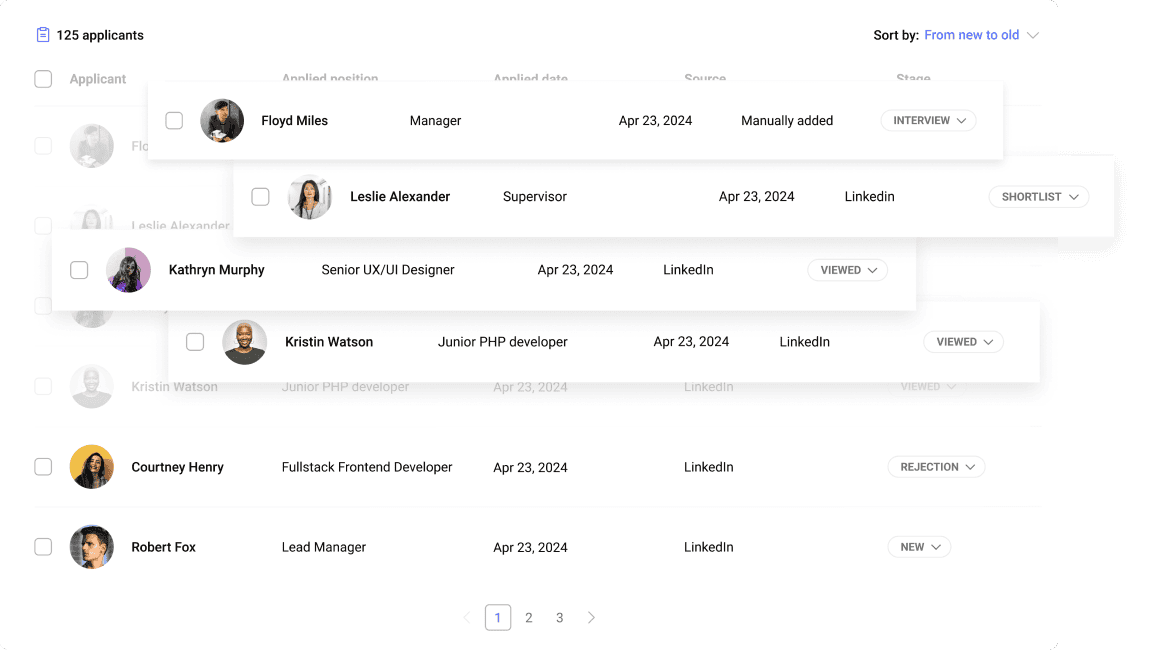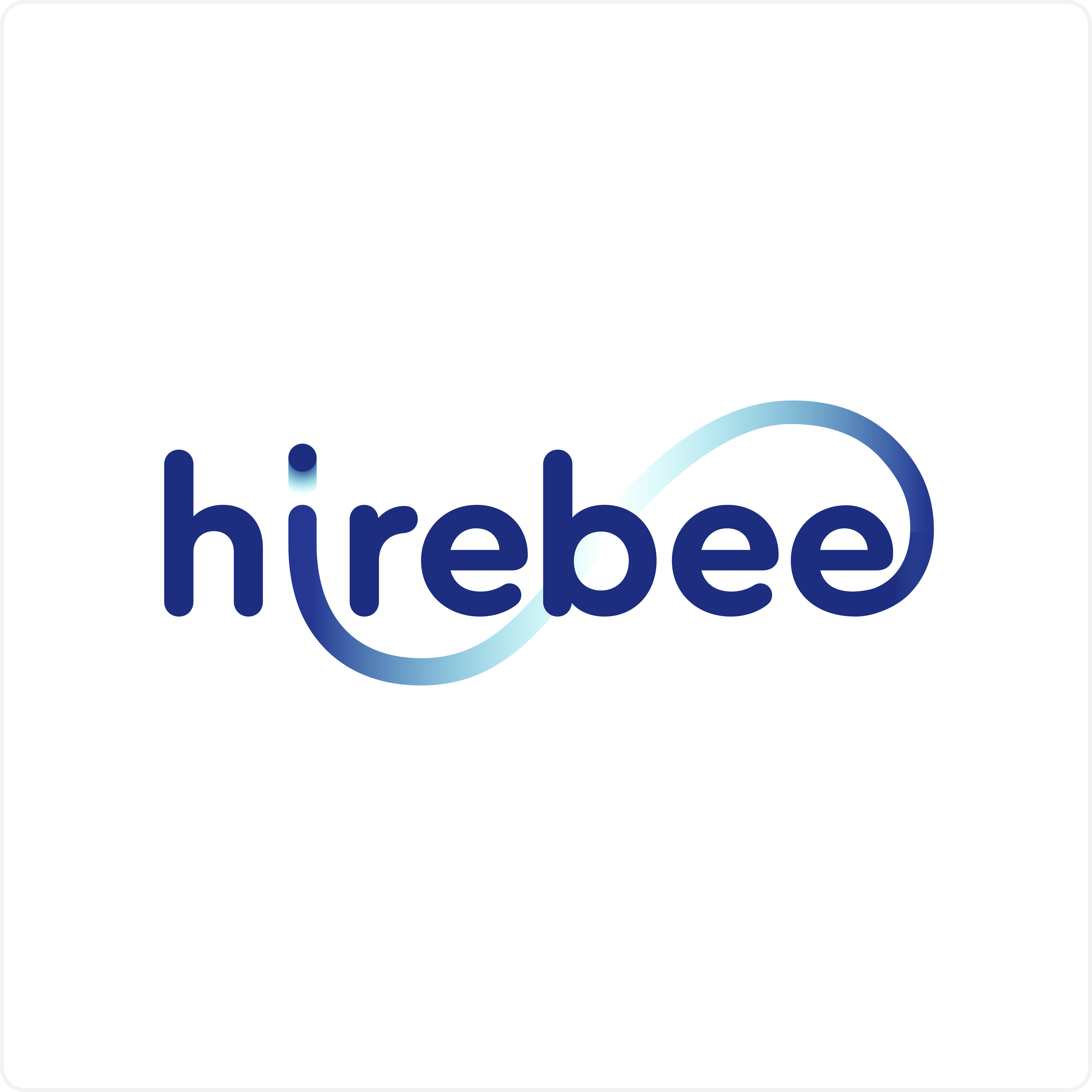What is Candidate Sourcing
Candidate sourcing is the practice of proactively searching the talent market for candidates, instead of having candidates search for you. While the practice has been around for ages, the advent of the internet has greatly accelerated its adoption. With LinkedIn, Indeed, and GitHub, it is now easier than ever to find passive candidates who are relevant to your open positions.
When looking at the sheer size of the passive talent market, it becomes clear as to why candidate sourcing presents itself as a truly lucrative opportunity for employers. Joint research conducted with LinkedIn reveals that a whopping 85% of jobs are found through networking and that 65-75% of the talent market comprises passive candidates. This is part of an extensive series of guides about workforce management.
What is The Difference Between an Active and a Passive Candidate
While active candidates are on the hunt for a new job, passive candidates are not actively on the lookout but would be open to new job opportunities if offered regardless. Active candidates are actively filling out job applications, requesting referrals, and scouring the job market for relevant vacancies. Meanwhile, passive candidates are usually employed individuals who have established a presence in the job market through networking and managing professional profiles for employers to find when on the search for a candidate.
This means that if a recruitment campaign is limited to only distributing job announcements for active candidates to apply to, you are missing out on the majority of the job market! But with a winning candidate sourcing software, businesses can successfully target the rest of the talent market and bring in a more diverse and robust pool of applicants.
Candidate Sourcing Channels
Finding the right talent requires a strategic approach. By leveraging multiple sourcing channels, recruiters can expand their reach and attract top candidates. Below are some of the most effective methods used in recruitment.
Social Media Platforms
Social media has become a powerful tool for connecting with potential candidates. Platforms like LinkedIn, Twitter, and Facebook allow recruiters to engage with professionals, build relationships, and showcase employer branding. A well-planned approach on these platforms can help attract both active job seekers and passive candidates.
Job Boards and Niche Platforms
General job boards such as Indeed, Glassdoor, and Monster remain essential for recruitment. However, niche platforms cater to specific industries, making it easier to find specialized talent. These platforms streamline the sourcing process, ensuring that job postings reach the right audience.
University and Campus Recruitment
Partnering with universities and colleges helps organizations connect with emerging talent. Career fairs, internship programs, and collaborations with academic institutions create a steady pipeline of skilled professionals, making campus recruitment a valuable long-term strategy.
Employee Referral Programs
Encouraging employees to refer candidates within their network is one of the most effective ways to find high-quality hires. Referral programs not only reduce hiring time and costs but also help bring in candidates who are likely to be a strong cultural fit.
By using a mix of these sourcing channels, organizations can improve their recruitment efforts and build a strong talent pipeline.
How to Source Candidates? Talent Sourcing Steps
Effective talent sourcing starts with a structured approach to identifying and engaging the right candidates. By leveraging various channels and strategies, recruiters can build a strong talent pipeline and fill roles efficiently. Below are the key steps to streamline the sourcing in recruitment process.
Finding leads
All this sounds wonderful, but how does it all work? Well, firstly recruiters will need to identify where they will be sourcing their candidates from. Most, if not all, of the time, candidates will be sourced from various websites. Whether it’s LinkedIn, Indeed, GitHub, or any other website that has a robust database of resumes or professional profiles.
Using candidate databases
Establishing strategies and methodologies to find target candidates on these websites is important. The simplest way of doing so is by using the filters available on these websites. With these filters, you can optimize your candidate search in several ways.
- Searching for keywords. With LinkedIn and Indeed, recruiters can search through the candidate database by typing in keywords that are relevant to the vacant position. These relevant keywords are related to the job title, required skill sets, as well as preferred soft skills.
- Using boolean functions. Boolean functions are a way for sources to enhance their keyword search by setting rules in their searches. This is especially useful considering that the likelihood of all your targeted professional skills being listed in multiple resumes is low. For example, when searching for a content writer with adaptability, organization, communication, and work ethic skills, there are several ways to optimize your search. Using LinkedIn, we first use advanced search to enter the job title we are searching for. Then we use the search box to add our desired keywords with set rules.
(“adaptability” OR “organization” OR “communication” OR “work ethic”)
The simplest way for us to search for these interpersonal skills is to first search for candidates who possess any of them. With the screenshots that we will show later, it is almost impossible to find candidates who possess all of your desired soft skills.
((“adaptability” AND “organization”) OR (“adaptability” AND “communication”) OR (“work ethic” AND “communication”) OR “(adaptability” AND “communication”) OR (“organization” AND “work ethic”) OR (“adaptability” AND “work ethic”))
Meanwhile, adding more rules can expand your search to include different combinations of your desired skills. In the example above, our search will include all profiles with at least 2 of the desired skills. Sourcers can go more in-depth to create more and more optimized boolean functions to optimize their searches. Usually, it’s worth going in-depth with boolean functions when the number of results that match your search exceeds the manageable amount. Sourcers will often find that they are playing a game of numbers, getting pickier and pickier with their candidate selection until they have found the perfect amount of candidates to contact.
Here’s how this translates to real results.
- No boolean function and no desired skills — only job title
- Boolean function to include matches for any of the desired skills
- Boolean function to include at least two of our desired skills
- Boolean function to include all of our desired skills
As we can see, the number of results gets narrower and narrower. However, this isn’t the only way how teams should be narrowing and focusing their number of candidates. There are some more important indicators to go by, some of which are included in the filters of LinkedIn and similar platforms.
- Filters can be applied to your searches to narrow down the results to a more relevant pool of profiles. For example, if the position you’re hiring for is not remote, the location of the candidate would be an extremely relevant factor for your candidate search and would take priority over preferred skills that the candidate could possess but not have added to their profile.
There are some more extremely helpful filters to go by, including years of work experience and industries worked in. With years of work experience, you can filter your results to make sure that the candidates’ experience matches the requirements of the job position. Furthermore, the industry candidates have worked in can also prove valuable for businesses in niche or difficult fields, which would value having an employee who already has experience working in a similar field.
For example, if we were to negate the soft skills and merely look for a content writer who has experience working in the recruitment and staffing business to write content catered to this field, we could go ahead and do just that.
Teams can also review different talent pools derived from the same candidate target demographic, which they created using different search techniques, to see which technique brought in the higher quality candidates. Consider this a form of A/B testing that you can use to see which sourcing technique works best for you.
Networking
Outside of using candidate databases to search for candidates, networking also presents itself as an extremely valuable way of getting to know prospective candidates in your target demographic. Online communities are in every corner of the internet. From LinkedIn, Reddit, Slack, Discord, Twitter, Instagram, and more.
This presents an opportunity for employers to involve themselves in the relevant spaces and communities where they will get to know more about their target demographic and keep them in their talent pool if they need to hire for the position they were sourced for in the future. However, networking is more of a long-term strategy, as employers will simply not have enough time to make themselves acquainted with different communities and foster prospective candidate relationships to then garner applicants for an open job position. This will burn a lot of time and is simply unnecessary.
Engaging Potential Candidates
Keep in mind that not all leads will be interested in your vacancy. The average lead-to-candidate conversion rate is about 15–20%, and this conversion rate is largely influenced by how effectively teams manage their candidate relationship management. Mapping out a clear candidate journey map can help identify opportunities to improve communication and engagement throughout the process. The effectiveness of your candidate sourcing depends greatly on how you contact prospects and the strength of your employee value proposition. Several stages in the lead-to-candidate conversion process can be outlined within your candidate journey map to drive better results.
Capturing the interest of your leads
When contacting a lead, we should remember that while they are in the market for jobs, they are not in active pursuit. So our approach with our opening message with leads should be to bring about intrigue and get them to respond. These are a few helpful tips to implement into your candidate sourcing strategy for reaching out to your leads.
- Compliment them. Depending on what website you sourced the candidate from, mention what about their profile impressed you enough to contact them. This will make your leads feel appreciated and recognized, an important need for people. Providing your leads with the recognition they may or may not be getting at their current place of work can spark enough intrigue for them to reach back, at least to give their thanks. Whether or not you will be on the right track to converting a lead to a candidate with this approach, you will add a valuable connection to your network which can come in handy for future hiring needs.

This is a sample of what this may look like in practice:
“Hey, Sam!
I took a look at your profile, and I must say, I am very impressed with your working experience! Wow, 5 years at Spotify! That’s great, congratulations.
Our team is currently looking for a software engineer, and we thought you would be a perfect fit. …”
- Sell the job position to them. When sourcing passive candidates, it is important to keep in mind that the candidate has the upper hand in negotiations. They are the ones with a job and you are the one without the employee. That is why the approach to attracting passive candidates vastly differs from that of attracting active ones. Your vacancy isn’t enough, you have to sell the position to them and drive the point home that a career switch would be in their favor.
Once your lead has responded to your initial message, they will request to be filled in with the details of the job position. This is where teams lose the most leads. Your candidate sourcing strategy can be great, perfect even. But if your job position itself isn’t truly a lucrative opportunity, most leads won’t bother. It’s almost like having the perfect marketing strategy for a faulty product, leads will drop out once they sense what they have been offered is all fluff and no substance.
Remember when we had mentioned the employee value proposition previously? You might have been reading it thinking, “Well what on Earth is that?”. Well, don’t worry, because we’ve got you covered.
How Important is Employer Branding in the Sourcing Process?
To make the most of your candidate sourcing efforts, your team needs to sit down and dwell on this one question, “Why would employees make a career switch to work for us?”. Once this question has been fully answered, be assured that your team has all the ingredients necessary to bombard the job market with a crazy effective candidate sourcing strategy.
Well, how do we answer this question? Why would employees make the switch? Maybe you are offering something most of your competing employers are not. A fair compensation? Career growth opportunities? A sense of belonging? Whatever it is, you have to make sure that your employer brand is communicating this clearly and effectively.
What you are strategizing is the employee value proposition. An offering you are making as an employer, which is enticing to candidates and that your competing employers aren’t offering. It’s the unique selling proposition all over again but for human resources. Once you have fully identified what your employee value proposition is, you will need to develop a killer employer branding strategy that will convert candidates like crazy.

Converting Leads to Candidates
The most devastating and common mistake employers can make is to think that candidate sourcing is somehow a shortcut to filling jobs. Sure, it’s effective, but it doesn’t mean you get to skip vital hiring stages that would otherwise make sure that you have the right person filling your vacancy. That is why the urgency of smoothly converting your prospects to candidates cannot be understated. While your sourced candidates will feel as though they have the upper hand in negotiations as you have come to them, you need to make sure they understand that they are competing for this lucrative opportunity with other highly valued candidates who are equally capable. In other words, you are inspiring a competitive spirit in your freshly converted candidates to bring the best out of them in the hiring process. This way, you can truly evaluate who the best fit for your position will be.
We have found that ten times out of ten, this process is best carried out by leveraging the competitive advantages that come with using recruitment software. The value that recruitment software brings by retaining all the powerful data and information garnered throughout the candidate sourcing process is utterly indispensable. There is no reason to let so much of your hard work go to waste. By using recruitment software, you are retaining information and salvaging your recruitment efforts for future hires.
Using recruitment software for candidate sourcing
Why exactly is using recruitment software so vital for candidate sourcing? Well, remember when we talked about the advantages of creating a valuable network full of previously sourced candidates? That’s what is referred to as a talent pool in human resources, and not talent pooling with recruitment software will create a cluster in your recruitment process, which will hardly be valuable for your hiring process.
Talent pooling is the process of profiling and storing candidates who have previously shown interest in or applied to your vacancies. What you are effectively doing is compiling a valuable network of individuals whom you can always reach out to in the future when a position is made vacant or available. This way you are retaining your previous recruitment efforts and making the process of finding candidates who are interested in or relevant to your vacancy less of a hassle. Making talent pooling a consistent practice within your recruitment process is taking a proactive step to increase the number and quality of your candidates for future vacancies. The effectiveness of this stacks up, the more you hire, the more valuable connections you add to your network, creating a positive feedback loop that creates a golden recruitment chain.
Creating and managing talent pools
At the most basic level, recruitment software makes the process of adding candidates to your talent pool easier and faster. It essentially optimizes clicks, reducing the time and willpower wasted on copying/pasting information to your spreadsheets. With just a few clicks and an interface optimized for data entry, our Chrome extension makes light work of adding sourced candidates to your talent pool or applicant list.
Learn more about our sourcing extension >> Sourcing Extension – Hirebee
At a more advanced level, recruitment software later makes it easier and more effective to make use of these candidate profiles in your recruiting campaigns. If you’ve ever used spreadsheets for recruitment, you’ll know that it’s the most frustrating process to keep your list updated and to make use of the data. But what should frustrate you even more is the fact that you could have been using recruitment software to leverage candidate databases which are tailor-made for managing recruitment campaigns.
Candidate databases make it easier to review and communicate with candidates in your talent pool and your hiring pipeline in general. Instead of opening millions of tabs to revisit LinkedIn profiles and send emails to inform relevant candidates in the talent pool of a new job opportunity, candidate databases allow the user to perform all these tasks straight through their dashboard, without ever having to open a single new tab and eventually getting side-tracked. Overall, creating and managing your talent pool with recruitment software makes it easier to:
- Manage your candidate relationship management and keep your talent pool updated. Hirebee’s candidate database makes it easy for teams to keep tabs on their talent pool and prevent leads from going cold. With automatically updated information on when the candidates were added to the talent pool, when they last were contacted and logs of communication between the team and candidates, teams can get actionable insights into what their talent pool is looking like, and consistently update them by removing candidates which have gotten cold beyond recovery, and updating and adding notes to candidate profiles.
- Reach out to candidates when a relevant position becomes vacant. With email integration, you can directly come into contact with your candidates to inform them that a relevant position is made available. Furthermore, with email templates and shortlisting, you can automate your email campaigns and announce your job opening to all relevant candidates at once.
- Filter, search, and sort through your talent pool in general. A candidate database is in general more robust than a spreadsheet and can perform all of its functionalities with greater efficiency. Not only do you get to store detailed and actionable profiles in your talent pool, but you also get to filter, search, and sort through them in a way that makes going through your data less of a headache.
- Centralizing the recruitment process. Recruitment software has tons of other functionalities that help facilitate recruitment processes. By storing and managing your talent pool with recruitment software, you will also be able to perform all other relevant tasks with greater efficiency. Visit our homepage to see how our software can service your recruitment needs.
- Candidate sourcing with AI.
Candidate Sourcing with AI
Lastly, the most modern solution that can be leveraged with recruitment software is candidate sourcing with AI. Hirebee’s AI evaluates and ranks candidates in the database by how relevant they are to an assigned job position. So with your talent pool, you can assign a job position to immediately see which candidates are relevant for the job position. This can automate the process of reviewing your talent pool when you are looking to contact relevant candidates to inform them of your vacancy. Instead, you can immediately discern who your most relevant candidates are, and quickly reach out to them in no time.









